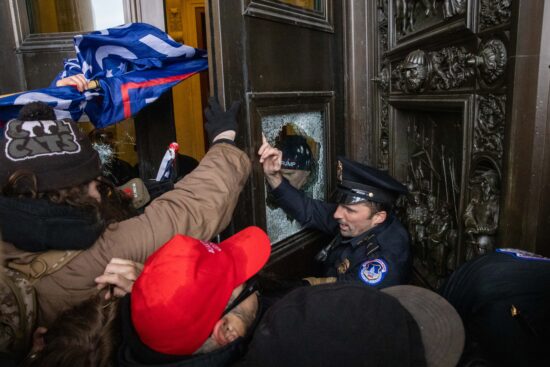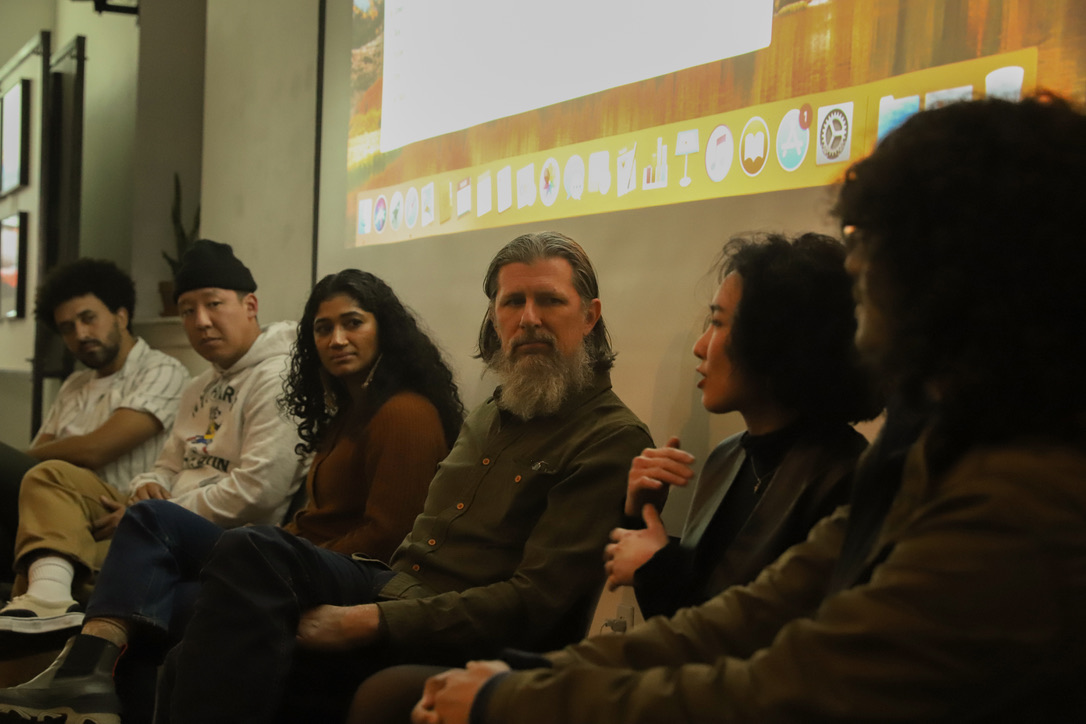Pictures have the power to convey truths — sometimes ugly ones — that cut through lies told by people in positions of authority. But in the so-called “post-truth” era, when politicians routinely accuse journalists of reporting “fake news,” does photojournalism still resonate?
This was among the questions considered by a panel of six photographers who documented the Jan. 6, 2021 riot in Washington, during a discussion at The Bronx Documentary Center last week. The center is currently hosting Storming of The Capitol, an exhibit with over two dozen pictures from that fateful day. The free exhibition ends March 20.
“It’s been amazing to watch the way the right has been able to twist and change the narrative. But I also think that if all these pictures didn’t exist, it’d be so much easier,” said photographer Victor Blue, who has also reported from Afghanistan and Syria. “It’s our job to provide evidence for history.”
The Jan. 6 Commission, which is investigating the attack, recently laid out potential criminal charges against former President Trump. Meanwhile, the FBI has made over 730 arrests, including at least 13 in New York City.
Holding the exhibition in the South Bronx is important because many local residents do not have the time or interest to dive into what actually happened, said Cynthia Rivera, co-curator of the show.
“We do have a fair number of Trump supporters here, too. I think that’s an important reason for having this show here, because we need to have these conversations about the truth,” she said.
One iconic photo in the exhibition, by Egyptian photographer Mostafa Bassim, is taken from inside the Capitol rotunda. The lower half of the photograph is a scene of chaos, as protestors battle police. Above them, the Capitol’s grand architecture and large paintings of the founding fathers project a dissonant-seeming sense of order.
Another photograph, by Ashley Gilbertson, depicts the bravery of Capitol Police Officer Eugene Goodman as he diverted part of the angry mob from the congressional chambers.
The exhibit also features videos. Rioters tear through police barricades, then parade through the building carrying Confederate flags. One man places a MAGA hat on a bust of George Washington.
The FBI has used photographs and videos posted on social media to identify many of the rioters. However, none of the photojournalists at the exhibition had been contacted by law enforcement. Had they been, they still would not have turned over their photographs, they said. Most journalists consider it unethical to share unpublished pictures with the police, especially when photographic evidence can be obtained through other means.
Photographer Gabriela Bhaskar remarked on the differences between how Capitol police dealt with majority-white protesters and how the NYPD responded to Black Lives Matter protests in New York the previous summer. In the South Bronx, the police responded to June 4, 2020, protests with a heavy crackdown that later drew rebuke from Human Rights Watch. By contrast, the Capitol police — many of them people of color themselves, and vastly outnumbered by the rioters — were much more restrained in response to the Jan. 6 rioters.
Photographer Dakota Santiago said that the extreme nature of the rioters’ belief in conspiracies became apparent after protester Ashley Babbit was shot.
“In real time, people that were outside started saying, ‘They’re all actors. Look at them — they’re all bullshitting,’” said Santiago. “It was insane. Someone had just been shot, died, bleeding all over the place.”
Perez, the show’s co-curator, said that people’s susceptibility to misinformation is part of the impetus for the show.
“People have been manipulated certain ways to believe certain things, and that has to do with twisting the media, and a lot of things that we stand against,” she said. “And that’s why we’re here.”
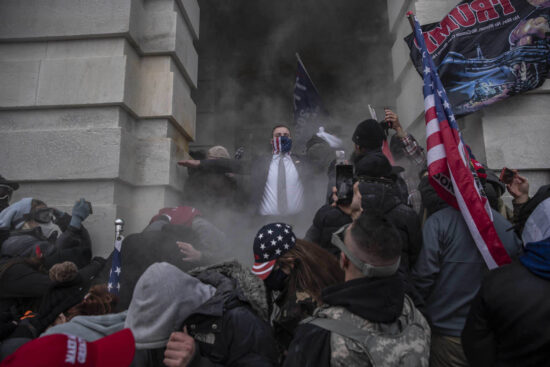
© Victor J. Blue

© Shuran Huang
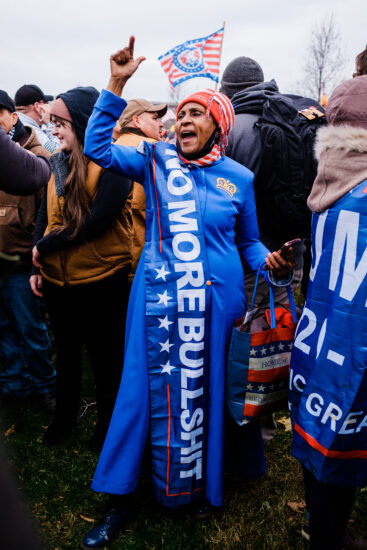
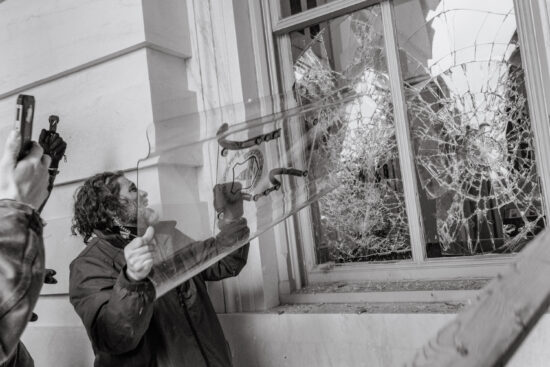
© Christopher Lee / TIME

© Mark Peterson
